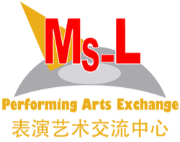Taoism
[/et_pb_divi_atm][et_pb_divi_atm admin_label=”Advanced Text” global_module=”2677″ saved_tabs=”all” background_layout=”light” text_orientation=”left” text_font_size_tablet=”51″ text_line_height_tablet=”2″ use_border_color=”off” border_color=”#ffffff” border_style=”solid”] | 1. Confucianism | 2.Taoism | 3. Buddhism | 4. Chinese Food | 5. Chinese Medicine | 6.Chinese Tea | 7. Chinese Astrology | 8. Chinese Painting | 9. China-Porcelain |
| 10. Silk, Embroidery and Brocade | 11. Fengshui | 12. Paifang | 13. Calligraphy | 14. Paper-Cuttings | 15. Music | 16. Literature | [/et_pb_divi_atm]
The Tao that can be spoken is not the eternal Tao
The Name that can be named is not the eternal Name
The nameless is the origin of Heaven and Earth
The named is the mother of myriad things– Tao Te Jing, ——by Laozi
Originally Taoism was only one school of philosophy amidst dozens. However, by 440 AD Taoism (translated into English as the path or way) had transformed into a religious belief and was adopted as the state religion during the late East Han Dynasty.
The most famous early Taoist thinkers are Laozi (Alternate spellings: Laotzu, Laotse, Lao Dan, Li Er) and Zhuang Zi (a.k.a Chuang Tzu). They were important figures in the development of philosophical Taoism and seemed to have no intention of founding a new religion. Legend says Laotzu had such profound wisdom that even Confucius visited him. He and Zhuang Zi developed the idea of Tao, the essential life force that flows through all living beings. They believed that nature was the source for all spiritual living and that humans could only thrive if they lived in harmony with the environment. There is little historical record remaining on the life of Laotzu. He faded into the history after he finished the famous book, Tao Te Jing (The Book of the Way of Power or Classic of the Way and Its Power). This 5,000-character manuscript later became the Taoist bible. Later, Chuang Tzu developed Taoism theory further and left another Taoist canon named with his own name – Chuang Tzu (The Book of Chuang Tzu). In later years Taoism was overwhelmed by the emerging Buddhist faith. However, during the Tang, Song, Yuan and Ming dynasties, Taoism boomed due to the imperial support. In the middle Qing Dynasty, Taoism lost imperial support and began to wane. However, it still has many followers in the country who practice acupuncture, herbal medicine, meditation and Tai Chi.
 At the center of Taoism is the concept of Tao, which is the natural order of things and cannot be explained since it exceeds senses, thoughts and imagination. It needs more meditation and contemplation and can be known only through mystical intuition. Literally Tao means “the path” or “the way”. Tao is the natural way of the universe, the driving power in nature, the order behind all life and the driving force behind all living things. It underlies everything and works beyond human logic. Taoists believe Tao is the origin of the universe and creates all living beings, thus they worship all life in the universe and everything else created by nature, thereby worship nature. Taoism encourages cooperating with nature and natural forces instead of against them. The Taoist teaching Wuwei (Non-action) tries persuading people not to try to control nature, to conform with it instead. Taoists realize that nature is constantly in transformation and change and its order and harmony are more stable.
At the center of Taoism is the concept of Tao, which is the natural order of things and cannot be explained since it exceeds senses, thoughts and imagination. It needs more meditation and contemplation and can be known only through mystical intuition. Literally Tao means “the path” or “the way”. Tao is the natural way of the universe, the driving power in nature, the order behind all life and the driving force behind all living things. It underlies everything and works beyond human logic. Taoists believe Tao is the origin of the universe and creates all living beings, thus they worship all life in the universe and everything else created by nature, thereby worship nature. Taoism encourages cooperating with nature and natural forces instead of against them. The Taoist teaching Wuwei (Non-action) tries persuading people not to try to control nature, to conform with it instead. Taoists realize that nature is constantly in transformation and change and its order and harmony are more stable.
Taoism also claimed people can be physically immortal. Taoists engaged in alchemy long ago to produce Elixirs of Immortality. There were two sects of alchemists. The Outer alchemists believed in herbal medicine and pharmacology. The Inner alchemists believed in alchemy inside their bodies with energy, qi and spirit. As a result, Chinese medical science and Taoism helped each other all the way.
Dialectic Taoism holds an opinion that the movement of Tao is continuous interplay between opposites. Taoists consider Yin and Yang are negative and positive principles of the universe. One cannot exist without the other, and they often represent opposites in relations to each other. Through the Taoist totem above, one can know how important they are in Taoism. Yin usually means negative, female, dark, evil and earth while Yang means positive, male, light, good and heaven. It is very similar with the Yin and Yang theory in Wushu, Chinese Herbalism, etc.
Taoism mainly preaches Wuwei (Non-action). The concept does not mean to do nothing as it literally suggests. It means to follow the natural flow of nature and let everything be what it naturally will be, not trying against it to satisfy nature. The concept was Taoist living attitude and utopian governing method (to govern lightly, with least visibility and a serving attitude, not to take actions involving the people).
Taoism also advocates Wuyu (Non-intention), which requires people not to desire too much from life. Simplicity, compassion, moderation and humility are also Taoist teachings.

